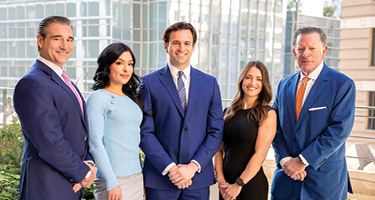In his Broadway show American Utopia—a joyous mix of music, dance and social commentary—David Byrne reprises his classic Talking Heads song “Once in a Lifetime.” Along with the lyrics “How do I work this?”, “Where is my large automobile?” and “This is not my beautiful house!” are the stirring refrains:
Well, how did I get here?
My God, what have I done?
These questions reverberate as I read mediation briefs in many cases in which the disputants close in on a trial or arbitration date with strong convictions that, sadly, don’t mirror reality. “Reality” here means the probability of winning juxtaposed against the cost of disputing fully—litigation costs, diversion of time and resources and other effects on organizations and people.
Mediators who do their job well carefully posit how things may play out—the good, the bad and the ugly—along with their associated costs. But even delivered delicately, that analysis can trigger awkward conversations among clients and counsel as to how an early case diagnosis has changed markedly, and why it took so long. This is often not pretty.
Based on my decades as a litigator, general counsel, client and neutral, let me share some tested steps to reduce one’s need to answer David Byrne’s famous questions and suffer the resulting harm to client and counsel relationships.
Conduct a premortem. In Beyond Right and Wrong, his groundbreaking work analyzing handicapping errors by counsel and their causes, Randall Kiser explores various ways to contain unwarranted overconfidence. One strategy is to conduct a “premortem” early in the life of a dispute: If we look back 12 to 24 months from now and things have gone sideways, how might that have happened? What can we do now to minimize that risk, or at least better measure it?
A disciplined review of where things might go wrong requires a hard look at all material assumptions and means to test them: What are we missing? It’s always better to kick the tires hard at the outset—and to keep kicking them. Which leads us to Step Two.
Talk early and often about the merits. The ease and efficiency of email and other forms of electronic communication is undeniable, yet they come with a cost. Emails and letters between adversaries rarely prompt frank exchanges. Instead, as essentially permanent records of communication, they typically resemble advocacy missives devoid of candor.
Yet the earlier that opponents meaningfully discuss the substance of a case—via phone or in person—the earlier the parties can come to an unvarnished view of the pluses, minuses and alternatives: repaired relationships, reinstated employees, reworked contracts and more. Saving those deeper dives until a later mediation can lead to troublesome days of reckoning, especially as many alternatives evaporate over time. Which leads to Step Three.
Don’t immediately default to mediation. The growing use of mediation to speed dispute resolution has been a godsend for clients, saving them time and resources, and preserving future opportunities. But mediation shouldn’t come first or supplant direct discussions. Indeed, direct dialogue often exposes the source of the misunderstanding of facts, positions and objectives. As such, it produces a closer approximation of reality and reveals productive paths to explore.
Of course, sometimes direct efforts don’t do the trick, and a facilitated negotiation (a fancy way to say “mediation”) is needed. But the preceding direct dialogue should significantly pare down the number of misunderstandings before mediation takes place.
Testing this approach at my prior companies, we adopted a “three-conversation” rule: Before any mediation took place, our inside or outside counsel were asked to have three substantive conversations with adversary counsel. Why three? Typically, the first call caught the other side off-guard. But by the second or third chat, a meaningful exchange would usually take place. We learned. They learned. Everyone could better assess, recalibrate and avoid unpleasant surprises down the road.
For direct exchanges to really be effective, by the way, they must be real exchanges. Playing hide-the-ball while asking for candid input from the other side doesn’t work. Nor should it. When conducted with candor, though, these exchanges often clear a path to resolution—sometimes with the aid of a mediator, sometimes not. But if mediation is inevitable, let’s move to Step Four.
Share your mediation briefs, and do so early. While some attorneys avoid sharing these briefs, think about the consequences of not doing so. Without the benefit of the other side’s best elucidation of their position, your side sees only the most positive spin on your story. Rose-colored glasses become rosier, positions harden and resetting expectations becomes more difficult. Conversely, sharing briefs allows everyone to assess realistic potential outcomes in advance, adding needed perspective to the mediation dialogue to follow.
Adjusting to adverse information also requires time, particularly when multiple constituents—business partners, insurers, family members—are involved. More than one “leveling” conversation is often needed. Sharing briefs early allows for this needed recalibration, thereby enabling the parties to avoid Byrne’s second question: My God, what have I done?
Implementing these recommended steps and doing so early in the life of all disputes regularly pays dividends, saving time and resources—and sometimes people and relationships, too. With all due respect to the great former Talking Heads front man, there’s no reason for a dispute assessment and settlement effort to be same as it ever was, same as it ever was.
Mark LeHocky is a mediator, arbitrator and special master with ADR Services, Inc. and a nationwide practice. For his ADR work in Mediation, Mark was voted 2022 “Lawyer of the Year” in San Francisco and has been repeatedly named to The Best Lawyers in America® for Mediation since 2016 by their peer reviewed voting system. Mark also teaches at UC Berkeley’s School of Law and Haas Graduate School of Business on the intersection of law, risk assessment and effective decision-making.





















